
[ad_1]
Invoice capture is the process of automating data capture from invoices to improve per invoice processing time and cost. In 2020, most companies are looking at new bleeding edge AI-based methods that have improved the data capture process more than ever.

In this blog we explore the different solutions available in the market for capturing data from invoices and help you decide what software might be best suitable for your company.
Introduction
Invoices come in all forms from various different sources – mail, email, internal drives, etc. for finance teams to process. Here is an example of a typical invoice processing workflow:

There are 2 different types of invoice capture solutions companies prefer:
- Template-based OCR – This type of a solution works when the same format of document keeps appearing. Any invoice apart from known format, will break. It’s the traditional way of capturing data from invoices.
- AI-based OCR – These new age solutions leverage artificial intelligence to capture data from unseen, new invoices.
These are nothing but optical character recognition (OCR) solutions that capture text data from invoice PDF/image files. The text output from images is captured into your accounting or ERP software for downstream payment processing.
In 2020, most companies are looking towards AI-based invoice capture that essentially captures structured data from invoices. Template-based solutions are slowly getting phased out of the market. In this blog, we see the state-of-the-art of the AI-based solutions and their capabilities in 2020.
What is Invoice Capture?
Invoice data capture (or invoice OCR) is a back-office process in most medium to large organizations where data from invoices to be paid in a particular period are manually captured into an excel file to be uploaded into an accounting or ERP software.

Automated vs Manual Invoice data capture
This process is a particular bottleneck especially during peak season where it can drain a lot of the productivity of your AP department. Apart from the productivity drain, based on our studies on an average, time spent on an invoice to manually extract data is 5-15 mins, costing you based on your geography anywhere between $1 to $5 per invoice! That’s a huge cost if you multiply the number of invoices you process each year. This is what most of us call a hidden cost. Compare this to the cost of processing an invoice through any AI-based solution, which is normally around $0.05/invoice. It’s a 20x difference at the minimum or 95% cost savings.

Also the time to process by AI solution is a mere few seconds which is a significant savings in invoice processing time too.
The next part of the blog helps you evaluate the various tools in the market and helps you make an informed decision.
Features of a good Invoice Capture software
Here are some of the features that we believe are important factors in making a decision for choosing an Invoice capture solution:
- Fields Captured
- Intelligent key-value pair extraction
- Table capture
- Intuitive UI
- 3-way matching
- On-premises
- Ease of customization
- Transparent Pricing
- Affordable cost
- Free Trial
- Integration with other systems
- On-chat support
1. Fields Captured
Any robust invoice capture solution should have support for a large number of invoice fields so that the maximum chunk of data entry workload is automated. While total, invoice number, and invoice date are standard fields available in most solutions, can your solution capture specific fields like bank details or PO number?
Here are some of the fields that need to be captured by your invoice OCR solution according to our experts:
Vendor details
Seller Name
Seller Address
Seller Phone
Seller Email
Seller bank account details
Invoice details
Invoice number
Invoice date
Invoice amount
Payment due date
Net_D
PO number
Currency
Buyer Details:
Buyer Address
Buyer Name
Tax Details
Tax Amount
Tax_ID
Table Details
Product Description
Quantity
Price
Line Amount
This list is not exhaustive but includes fields that our studies show are important to any AP team.
A key-value pair is nothing but the variable and it’s associated text value. For example, invoice number and its value.
Traditional rule-based OCR engines struggle for fields where the key is not clearly mentioned or the name varies (for eg. invoice no. or invoice # or bill #)
A good AI-based OCR tool should capture these values irrespective.
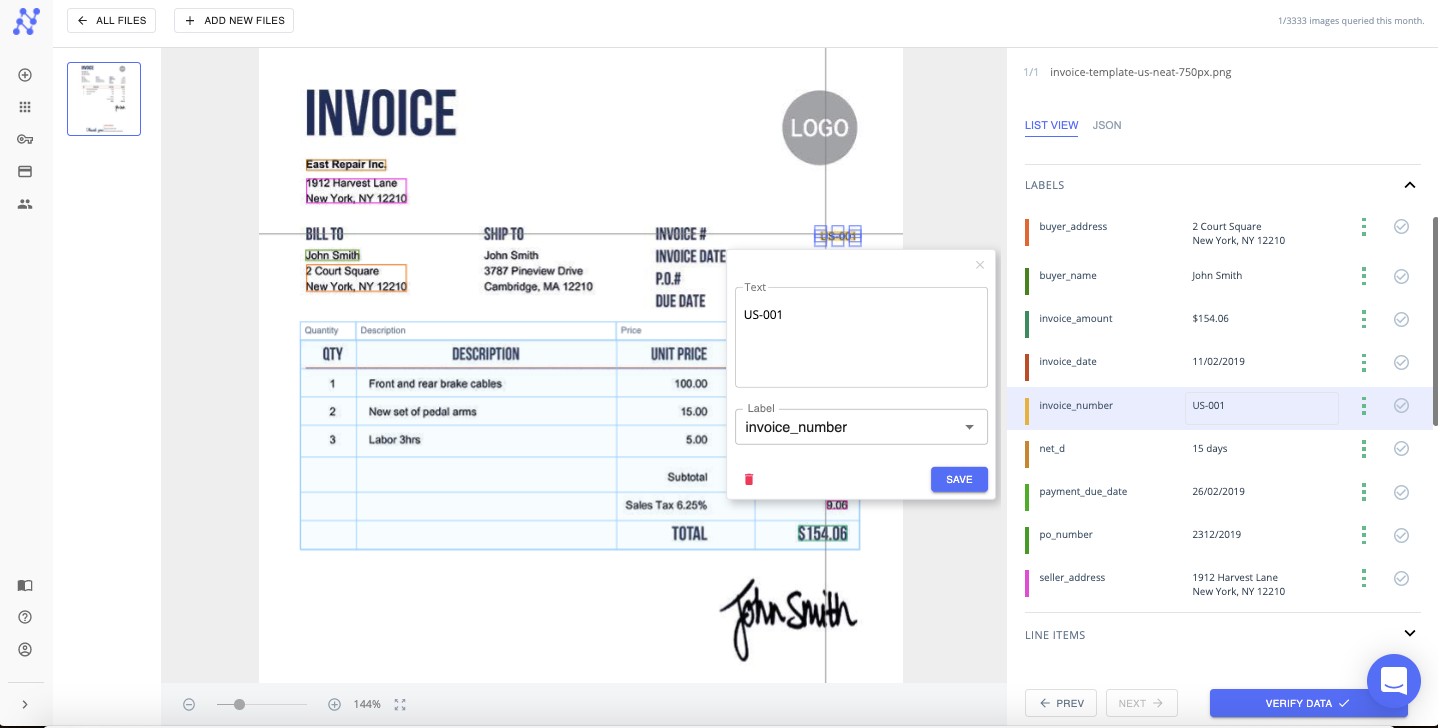
3. Table Capture
Tables in any invoice contain the information regarding items purchased in the transaction including additional details like PO number/Item Code.
Capturing data from these tables is particularly difficult since they are of various formats, sometimes even without borders.
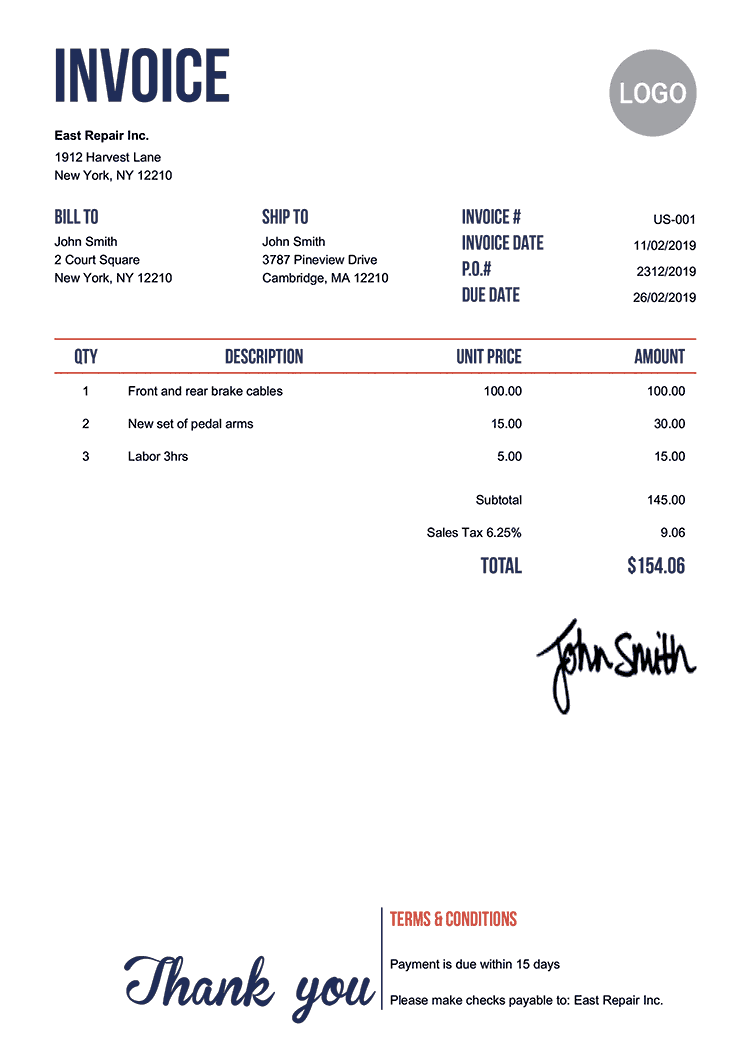
The AI-based invoice capture solutions in 2020 based on past training data are able to extract data from such tables and give you a structured output of line item data (JSON response contains row, col level information)
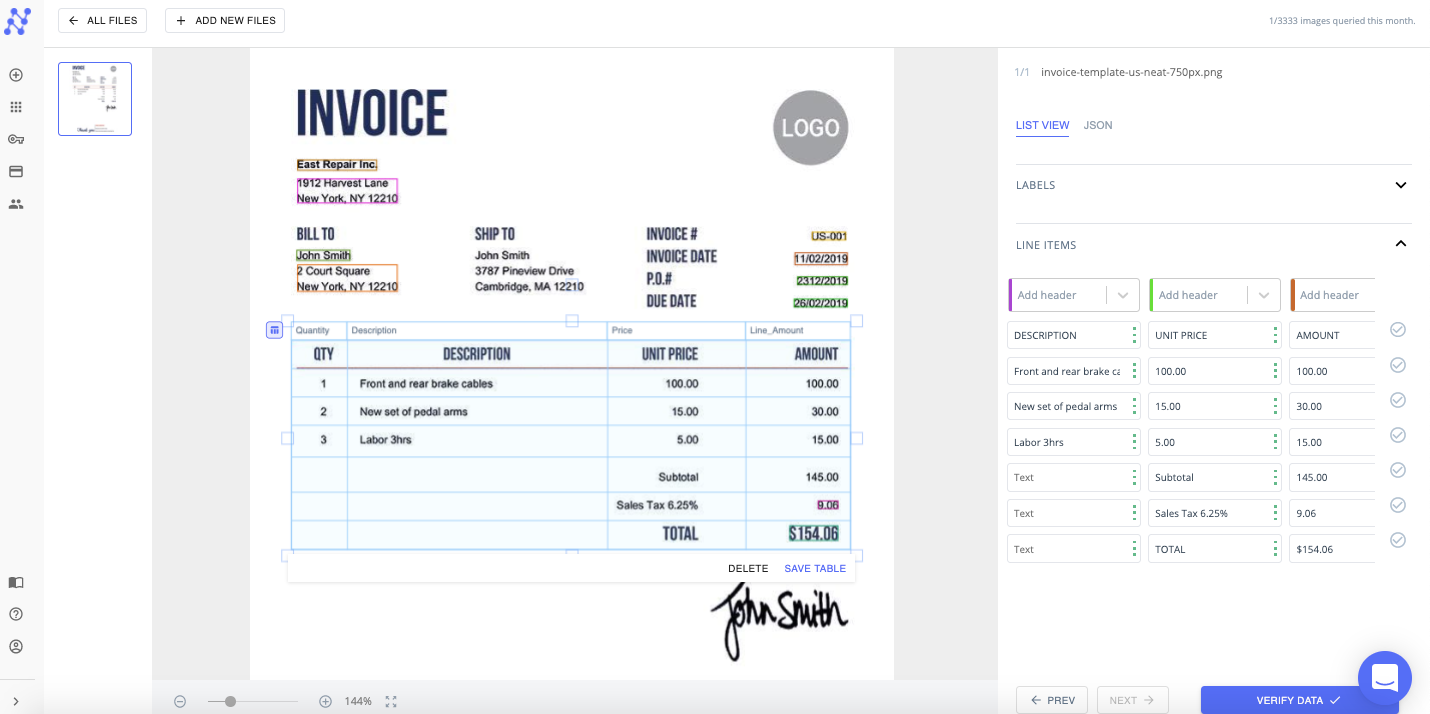
4. Intuitive UI
What if the values of the OCR engine aren’t correct and you need to correct them? Your choice of invoice data capture software should have a seamless way to correct and validate the responses of the OCR engine.
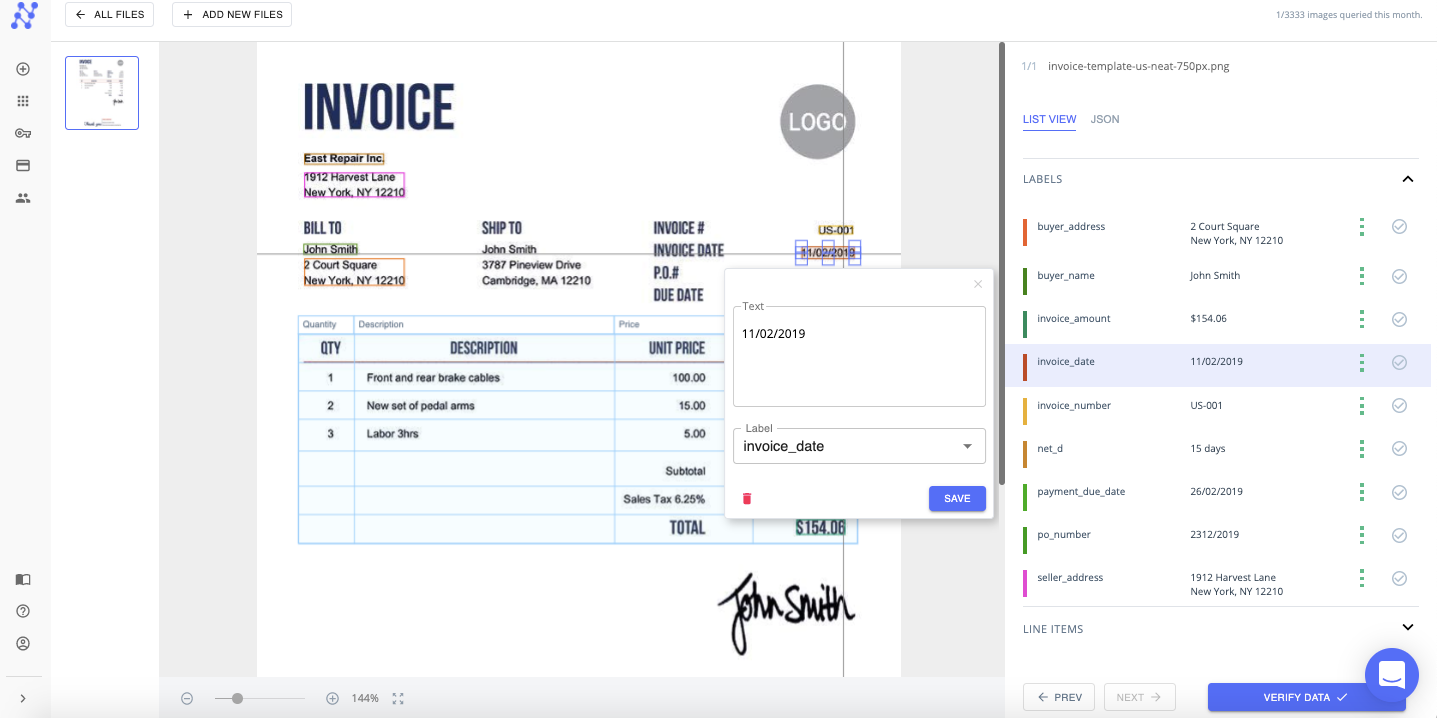
5. 3-way matching

Seller generates the Invoice. Buyer generates PO and Receipt. AP teams need to make sure it matches the information 3-way. A good invoice capture tool enables an AP team to seamless perform this 3-way matching. Some tools also offer 2-way matching but according to our evaluation criteria that falls short in the modern, robust AP processes in 2020.
The tools typically integrate with a vendor master sheet which has the PO number and look up if there is a match. If not a match, a flag is raised requiring human intervention. This is a check & balance to ensure only the correct values are exported.
This means that your software for invoice capture should also support other document types (like PO and receipts) as well as have connectors to other databases where values can be looked up.
6. On-premises
Is your solution cloud-based or can it work on-premises? Since AI-based models typically run on large GPUs, in a lot of tools, it’s not possible to run them on-premises.
A lot of times since data is sensitive, companies need an on-premise solution for processing invoices/bills. Also with the new GDPR requirements, on-premises solutions are the safest option in complying with them.
7. Ease of Customisation
Since AP processes are pretty unique to each company and vertical, there is a need for some flexibility when it comes to invoice capture tools.
It should be easy to add new custom fields to the invoice capture tool before getting started. For example, construction/repair job invoices have additional fields called “job code” that are specific to their industry. The invoice capture tool you choose should allow you to add field and train a custom model.
8. Transparent Pricing
Most invoice capture tools have opaque pricing requiring you to talk to their Sales team. Very few tools are transparent about their pricing and display it openly.
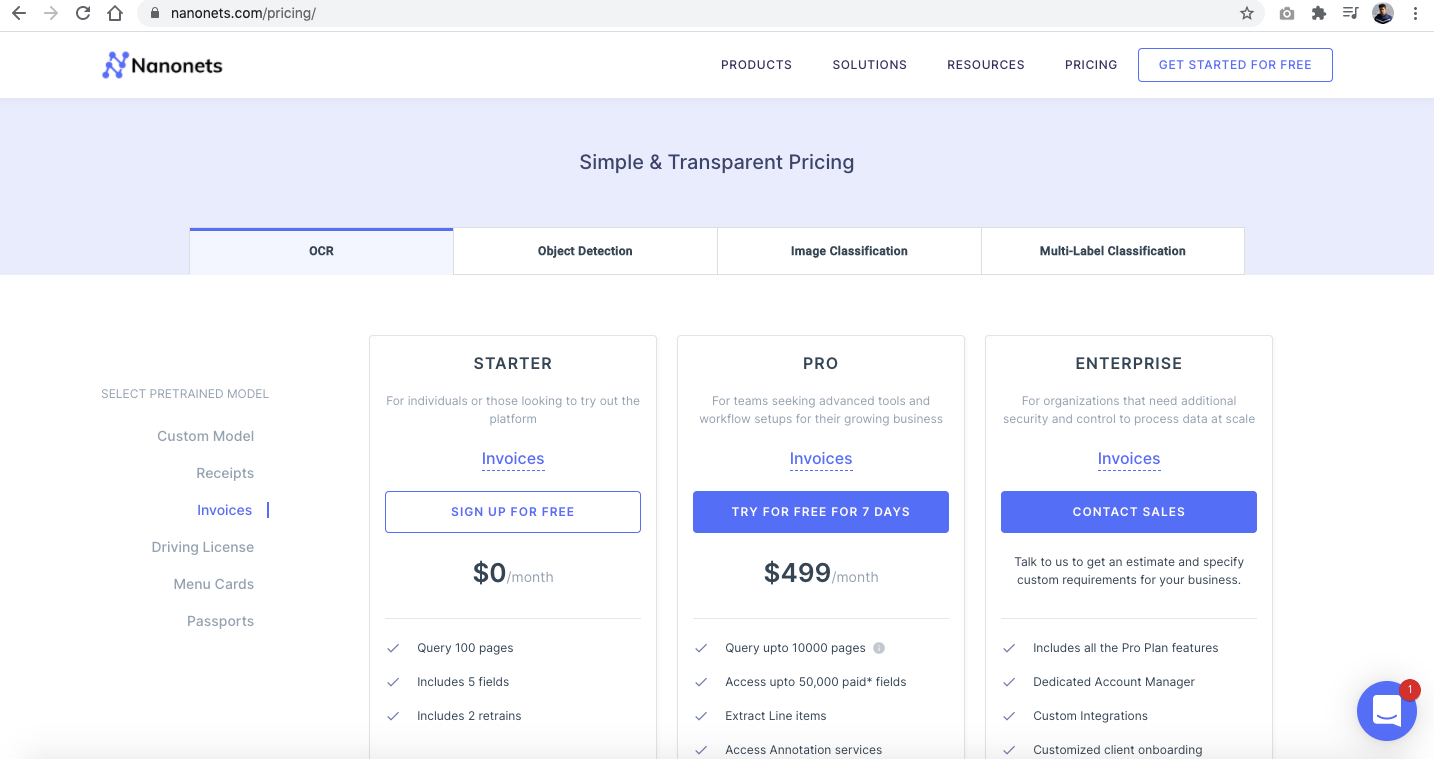
9. Affordable cost
How much does your system cost at a per invoice level? Is there any setup fees? Are there any hidden charges?
10. Free Trial
Before signing up and integrating the invoice capture tool with other downstream systems, you definitely want to try out the accuracy and performance of the software. Having an easy to access, free trial becomes a must in such a scenario. While looking for an invoice capture solution for your company, a Free trial is something that you should look for.
11. Integration with other systems
At the end of the day, just capturing data from invoices isn’t enough. This data needs to be fed into other systems ( ERP like SAP, Oracle etc. Accounting softwares like Quickbooks, Xero, etc. CRM like Salesforce) for payment to be processed.
Your invoice capture tool should support integration along with easy-to-use API and documentation for it should be available.
12. On-chat support
Support is a critical component for ease of use of any software purchase. Check if your choice of software for invoice capture has an option of on-chat support.
Now that we have the factors established to evaluate these tools, let’s look at the different tools available in the market in alphabetical order:
- Abbyy Flexicapture
- Kofax
- IBM Datacap
- Google Document AI
- Nanonets
- Rossum
- Veryfi
Some of these tools are dedicated for Invoice capture while others like Docparser are more generic for all types of documents.
We did a comparison between the different tools available in the market based on the evaluation criteria we decided earlier.
Scoring Mechanism – 1 if the said feature exists in the tool; 0 if it doesn’t.

Here’s the Google sheet for easy reference: https://docs.google.com/spreadsheets/d/1P9KiR1r18PSxpBaQAIhGdK-rYrWr1k4s-VuEiQPEmVc/edit#gid=0
As you can see Nanonets and Rossum are clear leaders in the market with Nanonets still further ahead of Rossum.
Nanonets scored 10/11 in the evaluation criteria.
Here is where Nanonets clearly stands out ahead of its competitors:
- Ability to customize – You can add your data to pre-trained invoice model and add custom fields to train a model all on the UI
- On-premises – You can run Nanonets on-premises via a docker
- Support – On-chat support for real-time query resolution helps users navigate the sometimes complicated world of invoice capture.
Nanonets supports invoice capture in over 60 languages. Build your own model or request a demo today!
Start using Nanonets for Automation
Try out the model or request a demo today!
TRY NOW
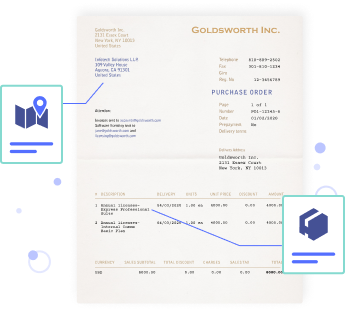
[ad_2]
Source link